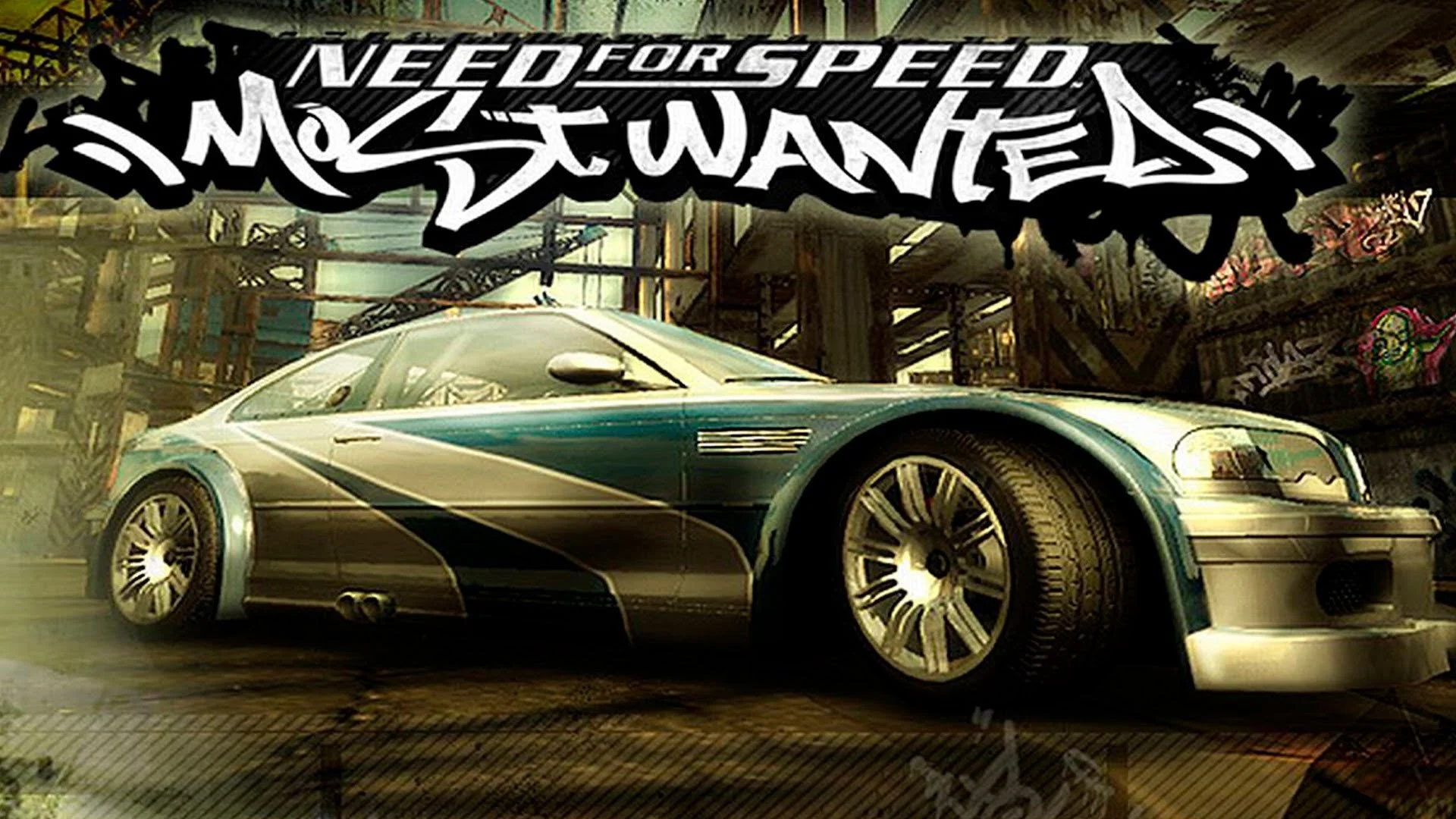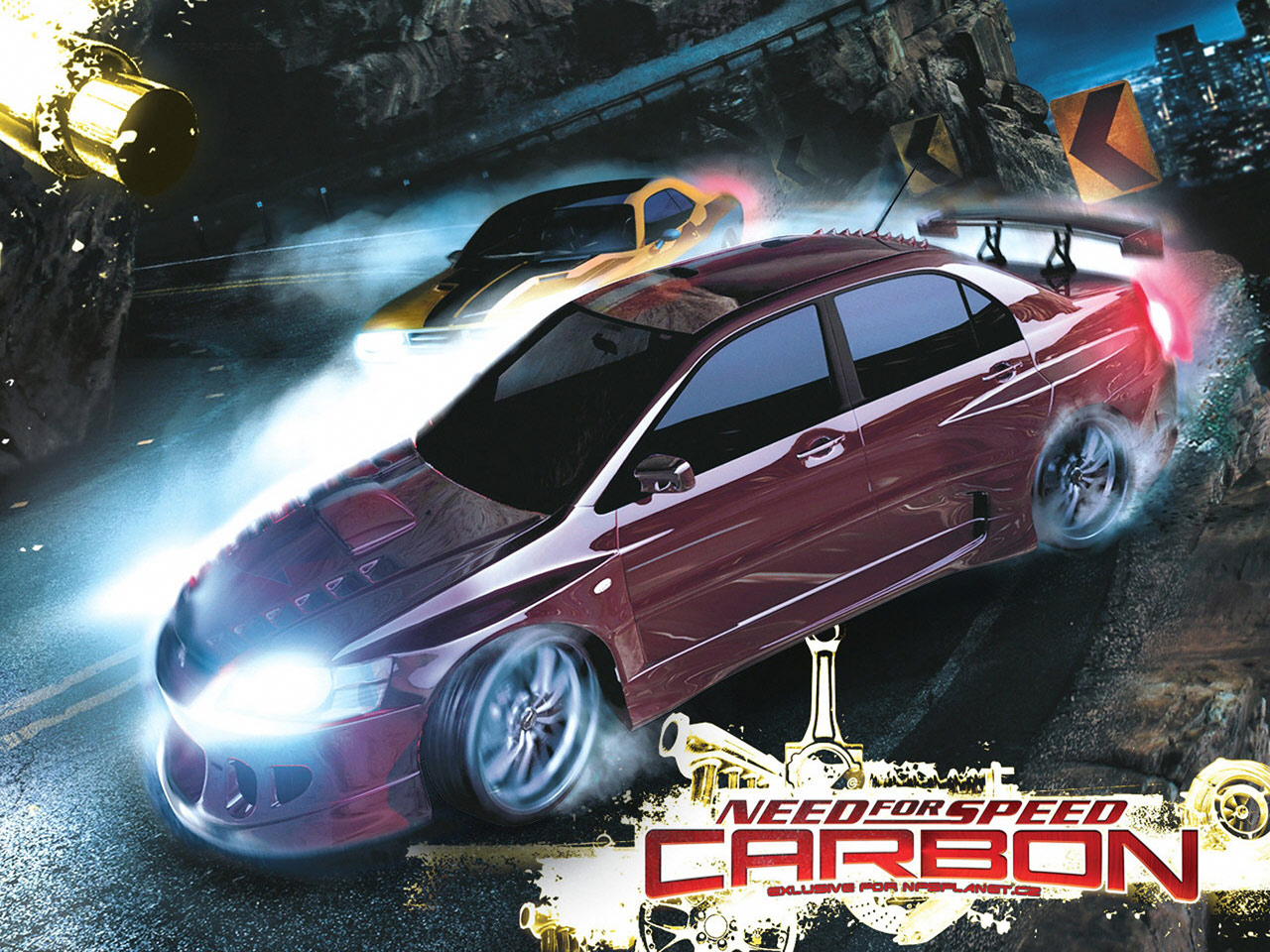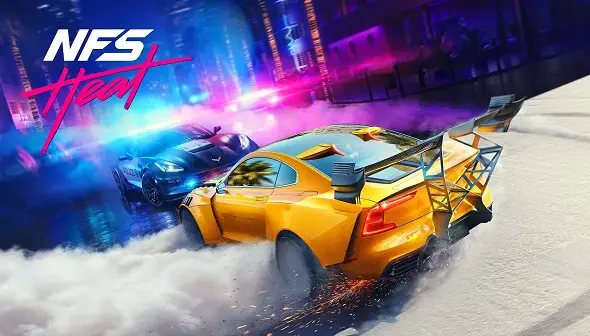Few game franchises get my adrenaline pumping like Need for Speed. From heart-racing police chases to the thrill of customizing my dream car the series has always delivered unforgettable racing experiences. Every title brings its own flavor but only a handful truly stand out as the best of the best.
I’ve spent countless hours behind the wheel exploring what makes each game unique. Whether it’s the rush of street racing or the challenge of dodging the law these top Need for Speed games have left a lasting mark on my gaming journey. Let’s dive into the five titles that I believe define the very essence of this iconic racing series.
Overview of the Need for Speed Franchise

Overview-of-the-Need-for-Speed-Franchise
I explore the Need for Speed franchise as a series that’s shaped arcade racing games since 1994. EA developed the series, integrating police pursuits, open worlds, and detailed customization across more than 20 games. Each main installment introduces different racing styles and features. Titles like Need for Speed: Hot Pursuit, Most Wanted, and Underground have reached millions of players, driven by both critical acclaim and strong community engagement.
EA adjusts the core formula with each release, sometimes prioritizing realistic handling, other times focusing on story-driven or cinematic experiences. As the franchise evolved, I noticed a shift to online multiplayer and broader car rosters.
Chronological Releases of Key Titles
| Release Year | Title | Notable Feature |
|---|---|---|
| 1994 | The Need for Speed | Realistic driving physics |
| 2003 | Need for Speed: Underground | Car modification, street racing |
| 2005 | Need for Speed: Most Wanted | Open world, police chases |
| 2010 | Need for Speed: Hot Pursuit | Autolog multiplayer system |
| 2019 | Need for Speed: Heat | Day-night racing, car builds |
Criteria for Selecting the Top 5 Need for Speed Games
Selecting the top 5 Need for Speed games involves these key factors:
- Game Impact: I focus on titles with significant influence on the racing genre. Big sales numbers and industry awards indicate game impact.
- Player Community: I consider games with active online play, large modding communities, or frequent mentions in fan polls.
- Gameplay Innovation: I evaluate unique mechanics, introduction of new modes, and substantial technical improvements.
- Replay Value: I review games offering lasting appeal, such as varied events, car customization, or engaging story modes.
- Critical Reception: I weigh Metacritic scores, positive critic reviews, and community feedback at release.
Comparison Table: Evaluation Metrics of Top 5 NFS Games
| Criterion | Example: Most Wanted | Example: Underground 2 | Example: Hot Pursuit | Example: Carbon | Example: Heat |
|---|---|---|---|---|---|
| Game Impact | High | High | High | Medium | Medium |
| Player Community | Strong Modding | Active | Competitive Online | Moderate | Competitive |
| Gameplay Innovation | Police Chases | Free Roam, Upgrades | Autolog, Pursuits | Crew System | Day/Night |
| Replay Value | Open World, Story | Customization | Leaderboards | Car Choices | Progression |
| Critical Reception | 89/100 Metacritic | 82/100 Metacritic | 86/100 Metacritic | 78/100 Metacritic | 73/100 Metacritic |
These factors provide a standardized approach, with each top pick meeting at least three of the listed metrics at an above-average level.
Need for Speed: Most Wanted (2005)

Need-for-Speed; Most-Wanted-(2005)
Need for Speed: Most Wanted (2005) sets a benchmark in the franchise with its open-world racing and gripping police pursuits. I see this title foregrounding car chases and rivalry, adding layers that define arcade racing.
Key Features and Gameplay
Key features in Most Wanted (2005) deliver an immersive street racing experience. I engage with a dynamic open world set in Rockport City, complete with traffic and unpredictable police AI. Progression depends on ranking up the “Blacklist,” an in-game leaderboard of 15 racers, each presenting escalating difficulty. Car customization stays impactful, covering visual modifications and performance upgrades for vehicles such as the BMW M3 GTR and Lexus IS300. The pursuit system introduces heat levels, increasing law enforcement response as players commit more infractions. Daytime-only races give clear visibility, emphasizing pursuit tension and high-speed strategy.
| Feature | Description | Notable Example |
|---|---|---|
| Open World | Freeroam in Rockport City | Exploring highways & backroads |
| Blacklist System | Defeat 15 rivals to climb ranks | Facing legendary Razor |
| Customization | Visuals, parts, and performance upgrades | BMW M3 GTR tuning |
| Police Pursuit | Heat system, roadblocks, spike strips | Heat Level 6 chases |
| Daytime Racing | All race events staged in daylight | Sprint & circuit tracks |
Why It Stands Out
Most Wanted (2005) stands out by merging custom car culture with thrilling cat-and-mouse action. I find the adrenaline in high-stakes chases unmistakable, drawing from police tactics and evolving pursuits rare in racers from that era. The AI adapts police response dynamically, making every escape feel unique and replayable. The Blacklist provides defined rivalry, so my every victory feels earned with meaning. Critics, such as IGN (score: 8.5/10), recognize its blend of arcade excitement, story integration, and robust car selection as pivotal for the series. Players globally cite this game’s unforgettable police chases, iconic cars, and seamless challenge progression as core reasons for its continued fan appeal.
| Area | Community Rating (Metacritic) | Innovation Level | Replay Value | Critical Reception |
|---|---|---|---|---|
| Most Wanted (2005) | 83/100 | High | Strong | Positive reviews |
| Underground 2 | 82/100 | Moderate | High | Positive reviews |
| Hot Pursuit (2010) | 86/100 | High | Moderate | Positive reviews |
Most Wanted (2005) continues attracting players with its unique police chase mechanics, iconic unlockables, and responsive gameplay loop, establishing itself as a cornerstone for the Need for Speed franchise.
Need for Speed: Underground 2
Need for Speed: Underground 2 transforms street racing with its expansive free-roam city and deep vehicle personalization. Players experience open-world exploration and urban car culture pulled directly from the heart of the franchise.
Key Features and Gameplay
Underground 2 delivers an urban racing narrative set in Bayview, connecting city districts through a seamless open world. Players drive day and night through five unique neighborhoods, unlocking events by discovering hidden locations.
- Car Customization Depth: Modifying vehicles includes performance upgrades, neon lights, body kits, spoilers, custom rims, and audio systems. Examples include selecting from over 30 real-world cars like the Nissan 350Z or Mitsubishi Lancer Evolution and tuning them both visually and mechanically.
- Diverse Race Types: Event types encompass Circuit, Sprint, Drag, Drift, and new additions like Street X and URL tournaments.
- Exploration Rewards: Hidden shops and track shortcuts add a layer of strategy, rewarding those who explore the map for aftermarket parts.
- Soundtrack and Atmosphere: The game’s soundtrack features hip-hop, rock, and electronic music, immersing players in 2004’s street racing vibe.
Table: Core Gameplay Elements in Underground 2
| Feature | Description | Example |
|---|---|---|
| Car Customization | In-depth performance/visual mods | Unique vinyls, spinners, hydraulics |
| Race Types | Multiple formats, urban environments | Drift, URL, Street X |
| Free-roam Exploration | Seamless city traversal, unlockable shops | Secret car part locations |
Why It Stands Out
Underground 2 stands out for redefining progression by merging exploration with race discovery. The open world encourages organic event initiation, breaking away from linear menus found in earlier games.
- Community Influence: Car culture and customization reflect real-world trends from the early 2000s, shown through branded parts and tuner magazines.
- Replay Value: Endless part combinations and route selections create high replayability. Players revisit the game to experiment with builds or find collectibles.
- Critical Reception: Reviewers and players praise the freedom in city navigation, unprecedented personalization, and replay factor. Metacritic scores average 82/100, citing innovation in open-world structure.
Underground 2’s legacy remains strong within the Need for Speed series, consistently ranking in franchise best-of lists due to its influential customization model and memorable city design.
Need for Speed: Hot Pursuit (2010)
Need for Speed: Hot Pursuit (2010) reintroduces the high-stakes rivalry between racers and law enforcement. I experience fast-paced chases and innovative multiplayer modes that define the title’s impact on arcade racing.
Key Features and Gameplay
Hot Pursuit (2010) focuses on open-road pursuits across the fictional Seacrest County. I can play as either a racer or a cop, accessing unique vehicles—examples include the Lamborghini Reventón and Bugatti Veyron for racers, or the Chevrolet Corvette ZR1 Interceptor for cops. The Autolog system allows instant multiplayer competition by syncing my progress with friends, tracking times, and issuing direct challenges.
Pursuit Tech lets me deploy gadgets like spike strips, EMP blasts, and roadblocks depending on my role in the chase. Competitive events range from standard races to interception and hot pursuit challenges. The vehicle physics provide an accessible arcade feel, with drifting and high-speed takedowns at the core of engagements.
| Key Gameplay Features | Description |
|---|---|
| Autolog | Social leaderboard, challenge system, multiplayer integration |
| Dual Careers | Play as racer or cop, separate progression paths |
| Pursuit Tech | Gadgets like spike strips, roadblocks, and EMPs for tactical advantage |
| Vehicle Roster | Exotic performance cars (e.g., Pagani Zonda Cinque, McLaren MP4-12C), cop cars |
| Event Types | Hot Pursuit, Interceptor, Race, Time Trial |
Why It Stands Out
Hot Pursuit (2010) excels by revitalizing classic chase mechanics with modern graphics and online integration. The Autolog social system creates continuous rivalry, as I consistently return to beat friend’s best times. Criterion Games blends signature arcade driving with cinematic police chases, differentiating it from simulation-based racing franchises.
Professional reviews consistently rate the game highly—Metacritic reports a score of 89/100 for PlayStation 3 (source: Metacritic, 2024). The seamless combination of solo and online play, dynamic environments like forest highways or coastal roads, and high replay value anchor Hot Pursuit (2010) as a franchise benchmark. My experience favors its intensity, making it a top Need for Speed game that captures the franchise’s signature excitement.
Need for Speed: Carbon

Need-for-Speed-Carbon
Need for Speed: Carbon blends intense canyon racing with a focus on crew dynamics. I experienced unique gameplay mechanics that set Carbon apart from earlier entries, especially during nighttime urban and canyon events.
Key Features and Gameplay
Need for Speed: Carbon introduces several distinct mechanics and innovations that impact gameplay:
- Canyon Duels: I found the downhill races on Carbon Canyon especially tense, where losing control or getting overtaken could end the event instantly.
- Crew System: Each race crew member performs specialized roles, like Blockers who disrupt rivals, Drafters who provide slipstreams, and Scouts who highlight shortcuts.
- AutoSculpt Customization: Carbon lets players adjust body parts–hoods, spoilers, and more–at a granular level, pushing past the changes possible in Underground 2 or Most Wanted.
- Police Pursuits: Pursuits still matter, escalating as events progress, although they’re less frequent than in Most Wanted.
- Career Progression: I claimed territories by defeating rival crews in circuit, sprint, and drift events, increasing replay value.
Table: Core Need for Speed: Carbon Features
| Feature | Description | Distinctiveness |
|---|---|---|
| Canyon Duels | Multi-stage 1v1 canyon battles | Exclusive event type in franchise |
| Crew System | Teammates with tactical racing roles | New strategic gameplay layer |
| AutoSculpt Customization | Adjustable car components at many points | Deeper than previous customization |
| Pursuits | Police chases triggered in open world events | Reduced focus, still challenging |
| Territory Conquest | Capture map sectors from rival crews | Connected career and world progression |
Why It Stands Out
Need for Speed: Carbon stands out for its fusion of high-stakes canyon racing and in-depth car modification. The nighttime city aesthetic and dynamic lighting bring visual distinction, while crew mechanics add a tactical approach rarely seen in other Need for Speed entries. AutoSculpt customization provides more creative control over vehicle appearance, building on the franchise’s tuning tradition from Underground 2 and Most Wanted. Canyon Duel races add tension through narrow, winding routes where a single misstep can end a run, driving home the risk-and-reward balance. My experiences in Carbon highlight the ways it advanced racing gameplay and set new expectations for team-based street racing within the franchise.
Need for Speed: Heat

Need-for-Speed-Heat
Need for Speed: Heat marks a return to form by blending classic pursuit thrills with deep car customization. The game introduces a dual vibe where day and night matter, both mechanically and tonally.
Key Features and Gameplay
Need for Speed: Heat centers on high-risk street racing in the fictional city of Palm City, which draws inspiration from Miami. Progression links closely with the time-of-day system—daytime sanctioned events offer money while nighttime illegal races yield Reputation (Rep).
- Day/Night Cycle: Daytime races deliver cash prizes, stoking garage upgrades. Night racing offers Rep but activates aggressive police units, increasing risk with each completed event.
- Customization: Deep car personalization supports engine swaps, visual styling, and detailed tuning for over 120 vehicles. Additions like wrap editors and sound system adjustments create unique builds.
- Police Encounters: Police presence intensifies at night, with Heat Levels (1–5) boosting pursuit difficulty and rewards. Evading at higher Heat multiplies Rep gains.
- Multiplayer Integration: Players connect in online Free Roam or participate in races, with crew progression and leaderboard rivalries adding replay value.
- Handling Model: Arcade driving includes a new drift mechanism, favoring accessible yet skill-based controls.
| Feature | Description |
|---|---|
| City | Palm City (open-world, Miami-inspired) |
| Vehicles | 127 cars from 33 manufacturers (as of 2020 update) |
| Customization | Visual tweaks, performance parts, sound tuning, body kits |
| Daytime Events | Sanctioned races, earn money, minimal police interference |
| Nighttime Events | Illegal street races, Rep stakes, frequent and intense pursuits |
| Max Pursuit Level | Heat 5, unlocks top-tier police units and highest Rep rewards |
| Online Play | Crew system, leaderboards, Free Roam, synchronous multiplayer |
Why It Stands Out
Need for Speed: Heat stands out by fusing classic cop chases with modern customization and an evolving city environment. The day/night split creates tension—money comes safely by day, Rep grows only if I survive police at night. Heat’s police AI reacts dynamically, chasing, boxing in, or calling roadblocks based on my Heat Level. The reward system means every high-stakes escape feels consequential.
Heat’s broad customization and palm-lined setting capture the flash of car culture and the thrill of outpacing law enforcement. Critical feedback cites its balance of arcade roots and new risk-versus-reward structure.
Conclusion
Choosing the top five Need for Speed games wasn’t easy but it’s clear that the franchise has delivered some unforgettable moments over the years. Each of these titles brings something special to the table whether it’s heart-pounding police chases or deep customization that lets you truly make a car your own.
As the series continues to evolve I’m excited to see how future releases will build on this legacy. For fans of speed adrenaline and car culture these games remain essential experiences that never get old.
Frequently Asked Questions
What is the Need for Speed franchise known for?
The Need for Speed franchise is famous for its fast-paced racing, thrilling police chases, open-world exploration, and deep car customization. Since 1994, it has set the standard for arcade-style racing games.
Which Need for Speed games are considered the best?
The article highlights Need for Speed: Most Wanted (2005), Underground 2, Hot Pursuit (2010), Carbon, and Heat as the top five entries. These stand out for their exciting gameplay, customization, and lasting impact on the franchise.
What makes Need for Speed: Most Wanted (2005) special?
Most Wanted (2005) is loved for its open-world freedom, dynamic police pursuits, the Blacklist rival system, and impactful car customization. It’s frequently praised for combining arcade racing with tense cop chases.
How is Need for Speed: Underground 2 different from other titles?
Underground 2 is unique for its free-roam city, day-night cycle, and in-depth vehicle personalization. It also allows players to unlock events by exploring, reflecting early 2000s car culture with a memorable soundtrack.
What’s unique about Need for Speed: Hot Pursuit (2010)?
Hot Pursuit (2010) stands out for its racer-versus-cop gameplay, high-speed chases, and the Autolog multiplayer system. Players can switch roles, access powerful vehicles, and compete online for top times.
How does Need for Speed: Carbon focus on crew dynamics?
Carbon introduces team racing with the Crew System, letting players recruit specialists with unique skills. It features Canyon Duels and the AutoSculpt Customization, making crew strategy key to winning races.
What makes Need for Speed: Heat a standout in the series?
Need for Speed: Heat brings back the excitement of police chases and robust car customization. Its day/night system changes gameplay, with daytime legal races and high-reward, high-risk nighttime events.
How has the Need for Speed formula evolved over the years?
The franchise has changed its focus between arcade racing, realism, story-driven gameplay, and online features. Each game introduces new mechanics, car rosters, and innovation to keep the series fresh.
What criteria were used to select the best Need for Speed games?
The top games were chosen based on their impact, player community engagement, innovation, replay value, and critical reception. Each selected game excels in multiple areas, ensuring high quality and enjoyment.
Does the franchise still focus on police chases and car customization?
Yes, police chases and car customization remain core elements in the best Need for Speed titles. These features keep the gameplay thrilling and let players express their style.

